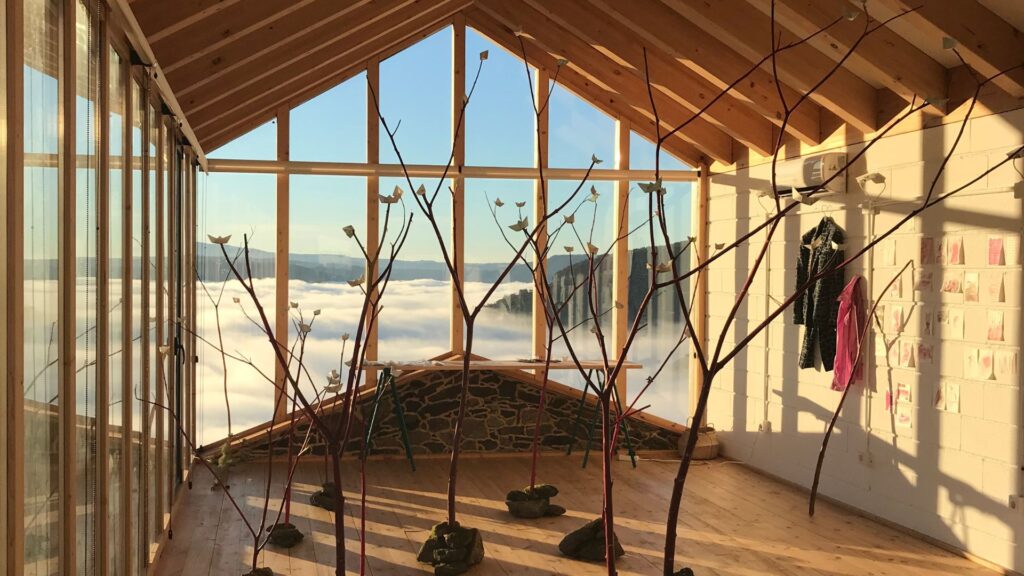
Monique Besten, a.k.a. “Bureau of Slow Endeavours” Finished a 20-day artist in residency at O Castro Art Village
Artist in Residence: Monique Besten at O Castro Art Village
Introduction:
Monique Besten, a Dutch artist known for her long-distance walking performances and site-specific projects, recently completed an artist residency at O Castro Art Village in Galicia, Spain. Operating under the moniker “Bureau of Slow Endeavours,” Besten’s work embraces slowness, mindfulness, and deep engagement with her surroundings. Through her unique artistic process, she explores themes of time, memory, and place, weaving together the past and present to create new narratives.
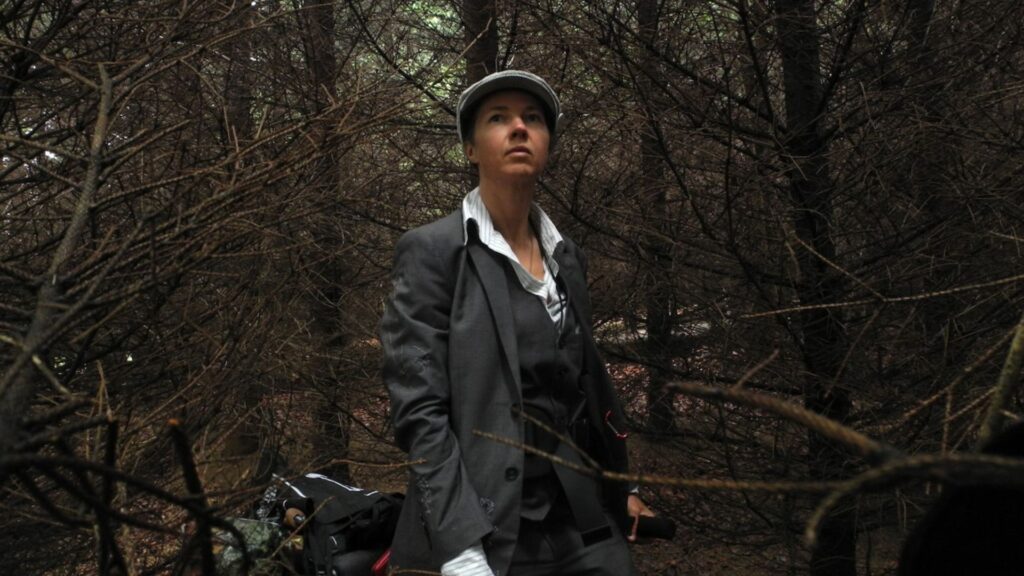
The O Castro Art Village Residency:
O Castro Art Village is a creative space dedicated to revitalising an abandoned village through art, collaboration, and community engagement. Nestled in the Galician countryside, it provides an ideal environment for artists seeking inspiration from nature, history, and the rhythms of rural life. During her residency, Besten embarked on a project titled “Exercise in Being Here,” an installation that integrates local materials, personal experiences, and historical remnants to reflect on transience, presence, and belonging.
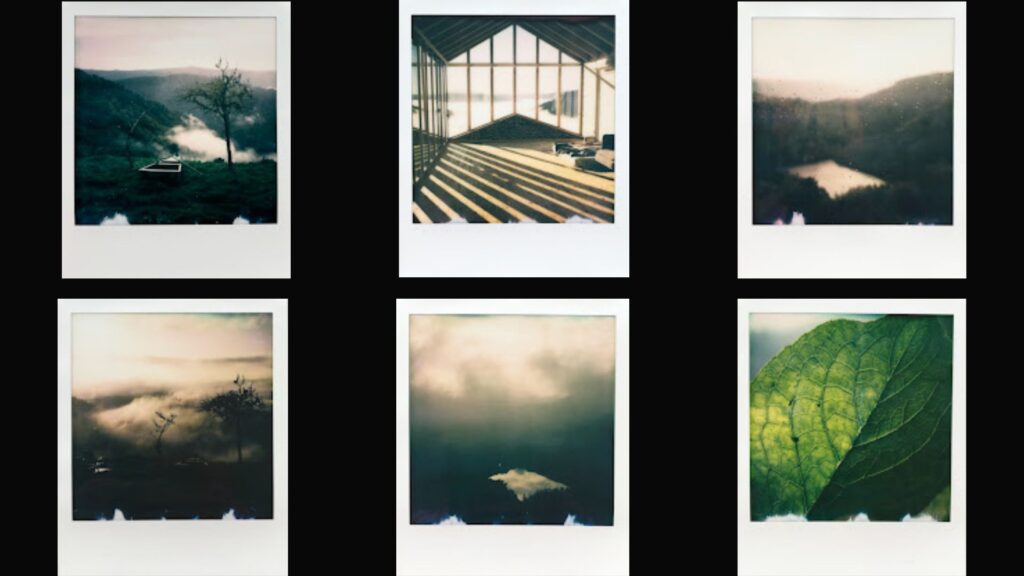
“Exercise in Being Here”: A Three-Part Installation
Besten’s work at O Castro Art Village took shape through a multifaceted installation composed of three interconnected elements: the Ruin, the Gallery Space, and the Geodesic Dome. Each component contributed to a dialogue between past and present, nature and human intervention, memory and transformation.
Ruin:
This part of the installation was housed in an old stone building, a space rich with history and traces of past inhabitants. Carmine red plant stalks adorned with paper boats, folded from pages of an old account ledger found on-site, stood as symbols of migration, trade, and passage through time. A business suit, worn by Besten on her journey to the village, was transformed with hand-drawn sketches of local dry stone walls, linking personal experience with the surrounding landscape. Complementing this, a white shirt dyed with pokeweed berries and a blue bucket holding a single paper boat further illustrated the blend of natural and human-made elements.

Gallery Space:
In this indoor setting, Besten expanded upon the themes introduced in the Ruin. A forest of red stalks bearing paper boats created an immersive environment, inviting viewers to navigate through the delicate balance between fragility and resilience. Drawings crafted with natural pokeberry ink, carefully arranged seeds resembling an unknown script, and glass bottles containing various organic inks formed an archive of materials sourced from the land. These elements served as a meditation on the cyclical processes of nature and the act of artistic creation as a way of documenting ephemeral moments.

Geodesic Dome:
The final part of the installation was a video projection within a geodesic dome, showcasing the dispersal of seeds from local plants. This moving imagery echoed the themes of journey and regeneration, emphasising the importance of slowness and observation in understanding one’s place in the world.
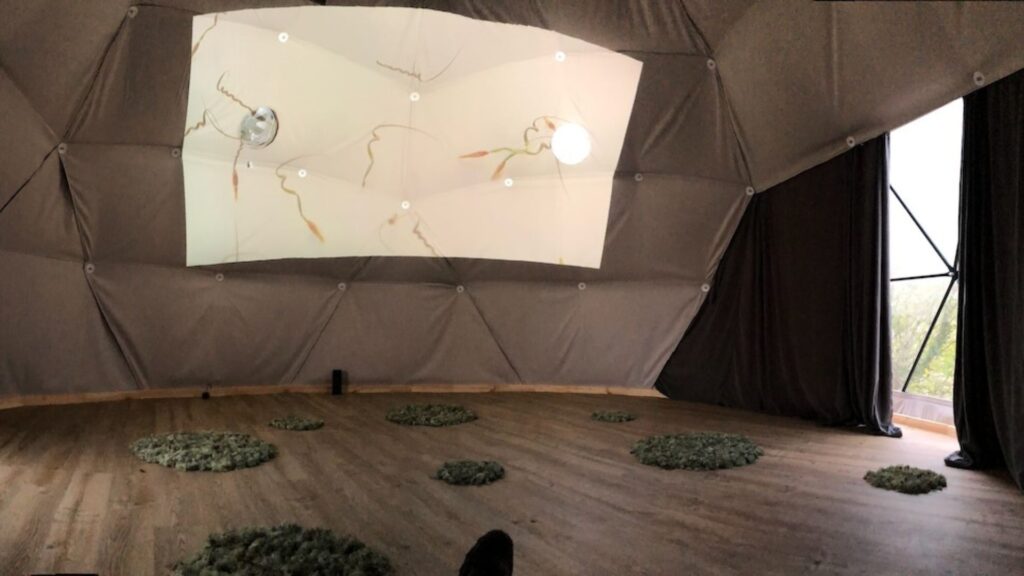
A Practice Rooted in Slowness and Attention
Throughout her residency, Besten immersed herself in the landscape and daily rhythms of O Castro. Each morning, she visited a small paper boat installation, waiting for the mist to clear and reveal the land anew. This ritual underscored her commitment to presence and attentiveness, reinforcing the project’s core message of deep engagement with the environment.
A key aspect of her process involved the creation of natural inks from local materials. The most striking hue, a vivid pinkish-red, was extracted from pokeweed berries, a plant abundant in the area. Other colors emerged from oak galls combined with spring water and rusty nails, lichens harvested from dry stone walls, and greater celandine. These pigments not only connected her work to the local ecology but also honoured traditional methods of using natural resources in artistic expression.
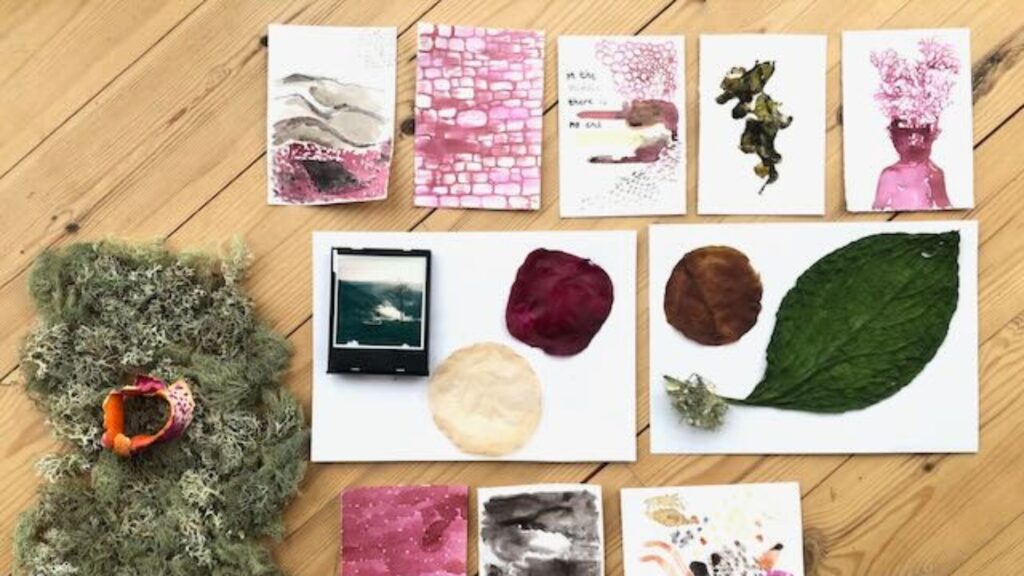
Art as a Bridge Between Past and Future
“Exercise in Being Here” exemplifies O Castro Art Village’s mission: to breathe new life into forgotten spaces through creativity, storytelling, and community interaction. By integrating history, nature, and personal experience, Besten’s work invites viewers to reconsider their relationship with time, place, and memory. Her residency stands as a testament to the power of slow, intentional artistic practices in fostering deeper connections between people, landscapes, and the narratives that shape them.
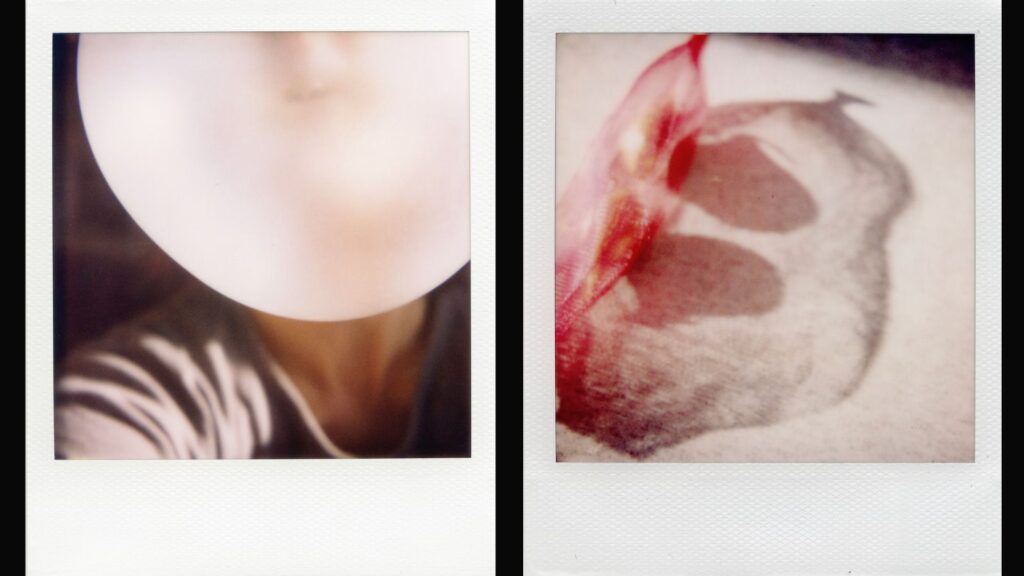
For more insights into Monique Besten’s artistic journey and her experiences at O Castro Art Village, visit her blog posts titled “Exercise in Being Here” 1-19 at, “Bureau of Slow Endeavours.”
